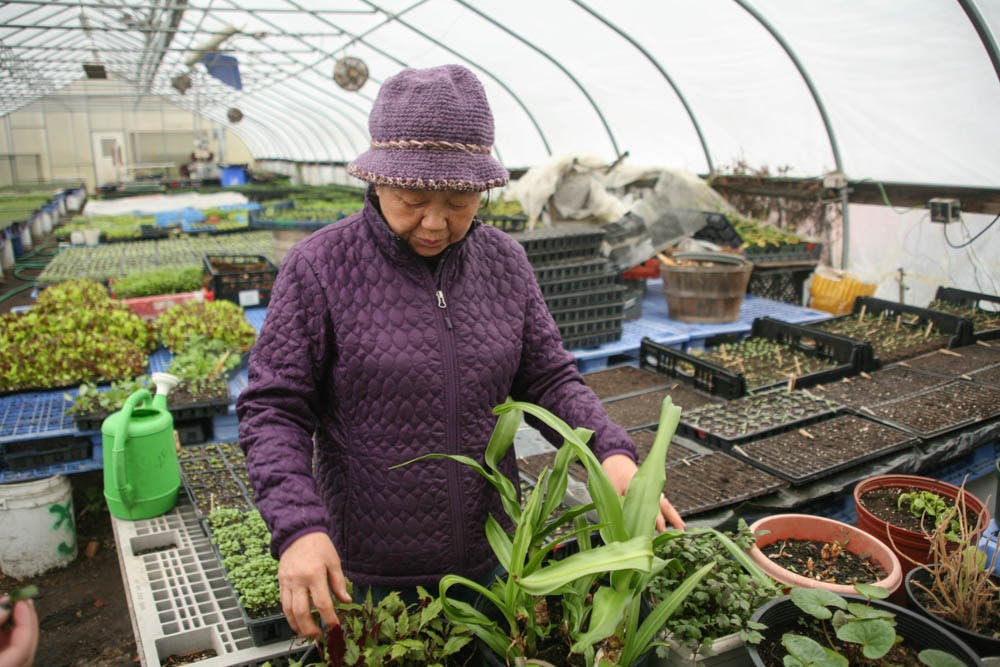“Where do you guys imagine your food comes from?” asked Aja Grande ’18 as she drove a van filled with members of Brown’s Ethnobotany Society toward a greenhouse on a small farm in Cranston. Pak Express Farm is barren in the early stages of spring, but within its white greenhouse grows a wide variety of vegetables that are sold to Brown students and professors as market shares.
Chang Xiong emigrated from Laos in 1996 and started Pak Express Farm five years later. It was much easier to farm in her home country, she said, because transplanting was not necessary — the soil here does not hold the same qualities. Xiong grew sugar cane and papayas in Laos, but in her Rhode Island greenhouse, she pointed out green onions, sweet peppers and peas. The broccoli grew out of seeds sent to the United States by Xiong’s sister, who still lives in Laos.
Students examined rows of seedlings and touched their leaves, listening as Xiong explained how one plant could be used to make a medicinal soup for new mothers and described a vegetable whose name she could not translate. There’s something inexplicable about being outside, surrounded by plants, Grande said. “You feel enlightened, you feel refreshed.”
Grande formed Brown’s Ethnobotany Society this semester to hear different viewpoints on human-plant interactions and to connect students to flora through off-campus excursions like this one.
Ethnobotany, which emerged alongside anthropology, focuses on the multifaceted relationship between people and plants. Though there is no standalone concentration at Brown, students have found ways to focus their studies on ethnobotany through other areas of study, such as fashion, food or medicine.
In studying ethnobotany, Grande emphasized the importance of preserving indigenous knowledge on plants. “There are cultures that are dying, and their knowledge of certain plants is indispensable,” she said, adding that this kind of information may not be widely known or utilized by doctors.
Shannon Kingsley ’20, a concentrator in history and biology, was also drawn to the use of botany by indigenous groups, especially in comparison to the treatments used in the health care system. “There are benefits of using natural products to heal ailments versus using a drug from a store to suit your medical needs,” she said.
In medicine, “the thought that plants could really have healing power is novel,” said Spenser Anderson ’18, who plans to concentrate in public health and development studies. “It forms a different kind of science.” Biotechnology has also made great advances by mimicking nature, he added.
Chiara Arellano ’20, an environmental studies concentrator, has tended to focus her studies on humans more than plants. But she was intrigued by the science of plant identification.
The Ethnobotany Society’s next event will bring students into the forest May 15 to hunt, identify and eat mushrooms. Grande hopes other members will bring ideas for the society to her, expanding the club’s focus. “That’s how disciplines get started,” she said. “A random group of people.”
Xiong will transplant her seedlings into the earth beginning this month, continuing to work eight hours a day with her plants.
“I like to farm,” Xiong said. “You become strong.”





